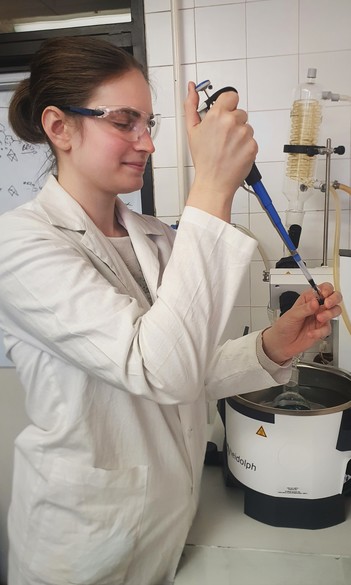Guidance from Hungarian chemists shapes the catalysts of the future

The major party of the so-called civilized world around us is made up of artificially produced or modified materials. They sustain our society, from simple building materials, paints and plastics to more sophisticatedly produced pesticides and pharmaceuticals.
To obtain these materials in a sustainable way, efficient chemical transformations are needed, facilitated by the use of catalysts.
The importance of catalyst research
Creating engineered materials is a complex process, depending on the type of material. Different reactions and chemical transformations result in the substance to be used. Catalysts control the speed and accuracy of chemical transformations. A properly selected catalyst can make the processes many times faster and sometimes cheaper, as it can trigger many intermediate steps.
"One of the main goals of catalyst research is to find new materials that can be produced with less environmental impact and/or cheaper than the transition metal catalysts commonly used today,"
– said Zoltán Novák, professor at the Department of Organic Chemistry, Eötvös Loránd University, researcher of the Diagnostics and Therapy Excellence Programme and first author of the study.
The Eötvös Loránd University's synthetic organic and catalytic chemists, led by Zsombor Gonda, Zoltán Novák and Gergely Tolnai, have recently investigated palladium as a catalyst in the Suzuki-Miyaura cross-coupling reaction, which was awarded the Nobel Prize in Chemistry in 2010. One of the results of the research is that the same results were obtained by reducing the amount of palladium used in the reactions. One practical use of this is in the pesticides industry, where the Suzuki reaction, and thus palladium, is frequently used in huge quantities, which could be significantly reduced by the new results.
Since the Suzuki reaction is one of the most commonly used chemical reactions in drug development, knowledge of the quantity and function of palladium could also speed up the drug production process. The more precise the knowledge of the nature of a catalyst and its function in the reaction, the more certain it is that false positives can be avoided, thus avoiding many early failures.
"The new method will allow us to screen out new catalysts that often give false-positive results early in the research process. In this way, we can efficiently obtain new types of catalysts or improve the efficiency of existing ones, sometimes by several orders of magnitude,"
said Gergely Tolnai, Assistant Professor at the Department of Organic Chemistry, and researcher of the Diagnostics and Therapy Excellence Programme, Eötvös Loránd University.
Simplifying the mapping of catalysts for chemical transformations
When searching for new catalysts, determining the quality of the actual catalyst is an important task. Researchers have created a general guideline to help determine the exact form of a catalyst. Applying the principles described in the guideline, they have been able to clarify a recent publication by preparing the putative catalyst using novel methods, applying different purification methods and investigating the conditions of conversion. As a result of their research, they concluded that the substance described as a catalyst in the publication is in fact only a carrier for a particularly efficient catalyst that can be used on its own.
The work of the chemists at Eötvös Lorán University was supported by measurements carried out by János Daru Assistant Professor at the ELTE Institute of Chemistry and by Zoltán May, Senior Research Fellow at the Research Centre for Natural Sciences, ELKH.
Cover: Adamik Reka / photo credit: GergelyTolnai

